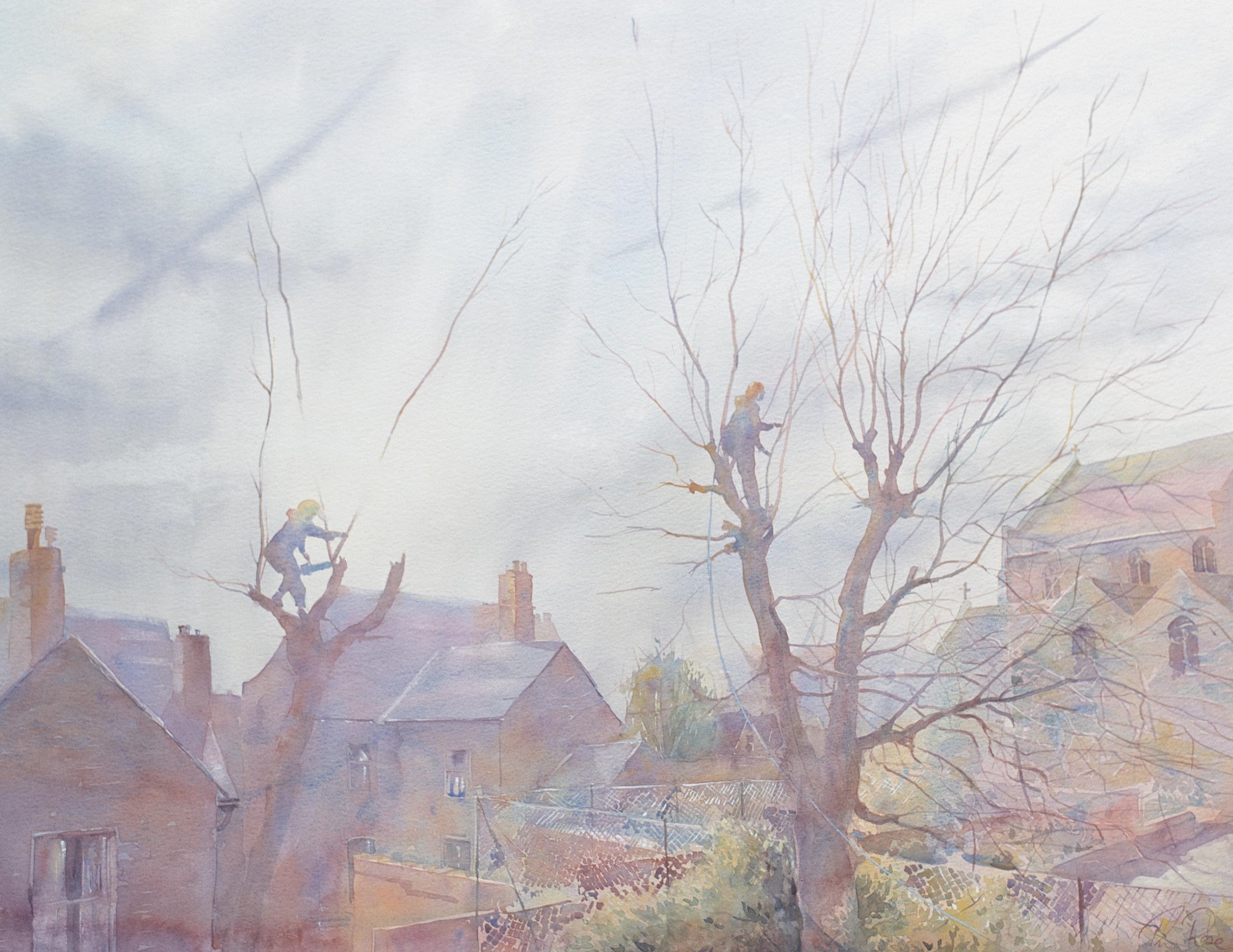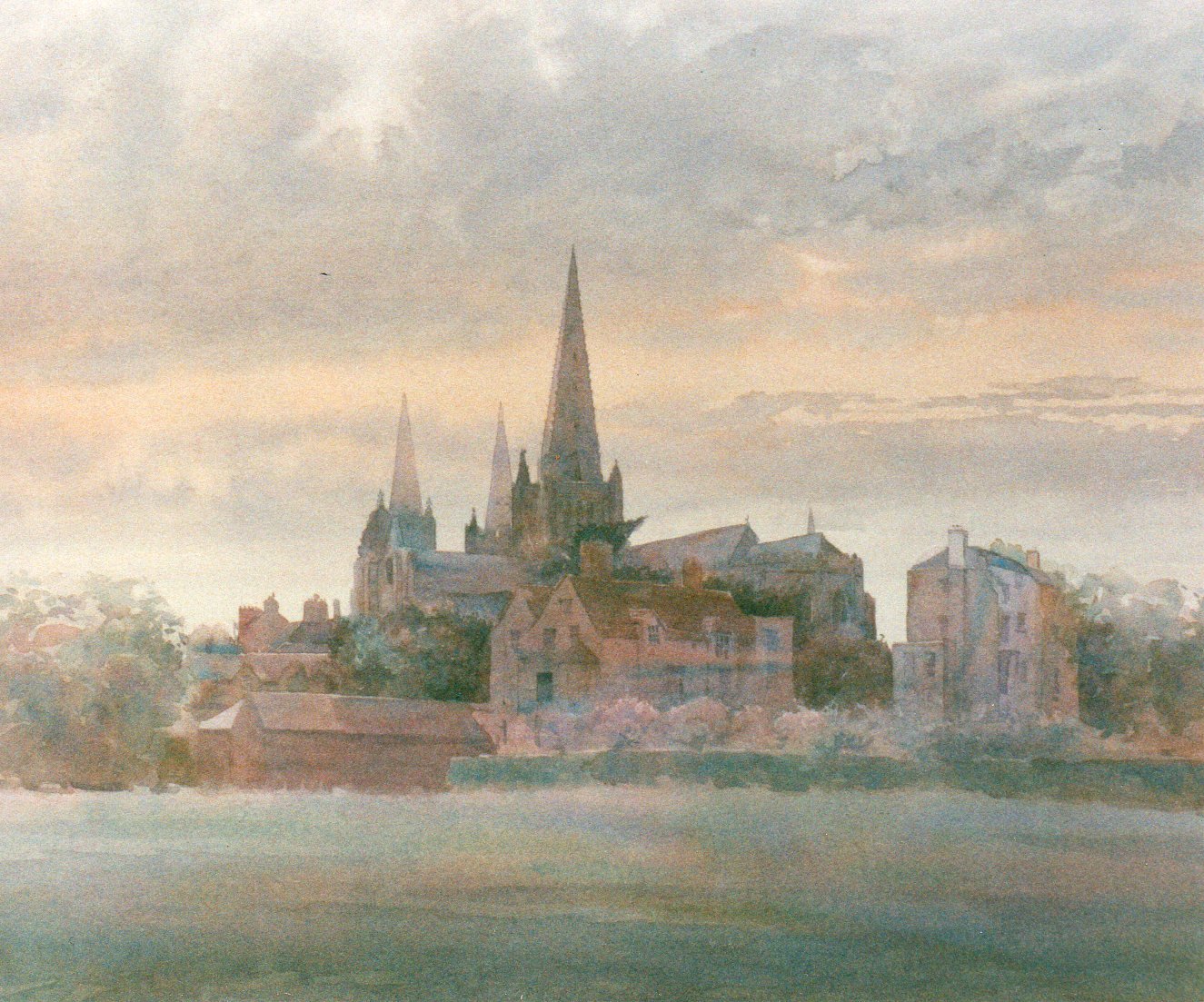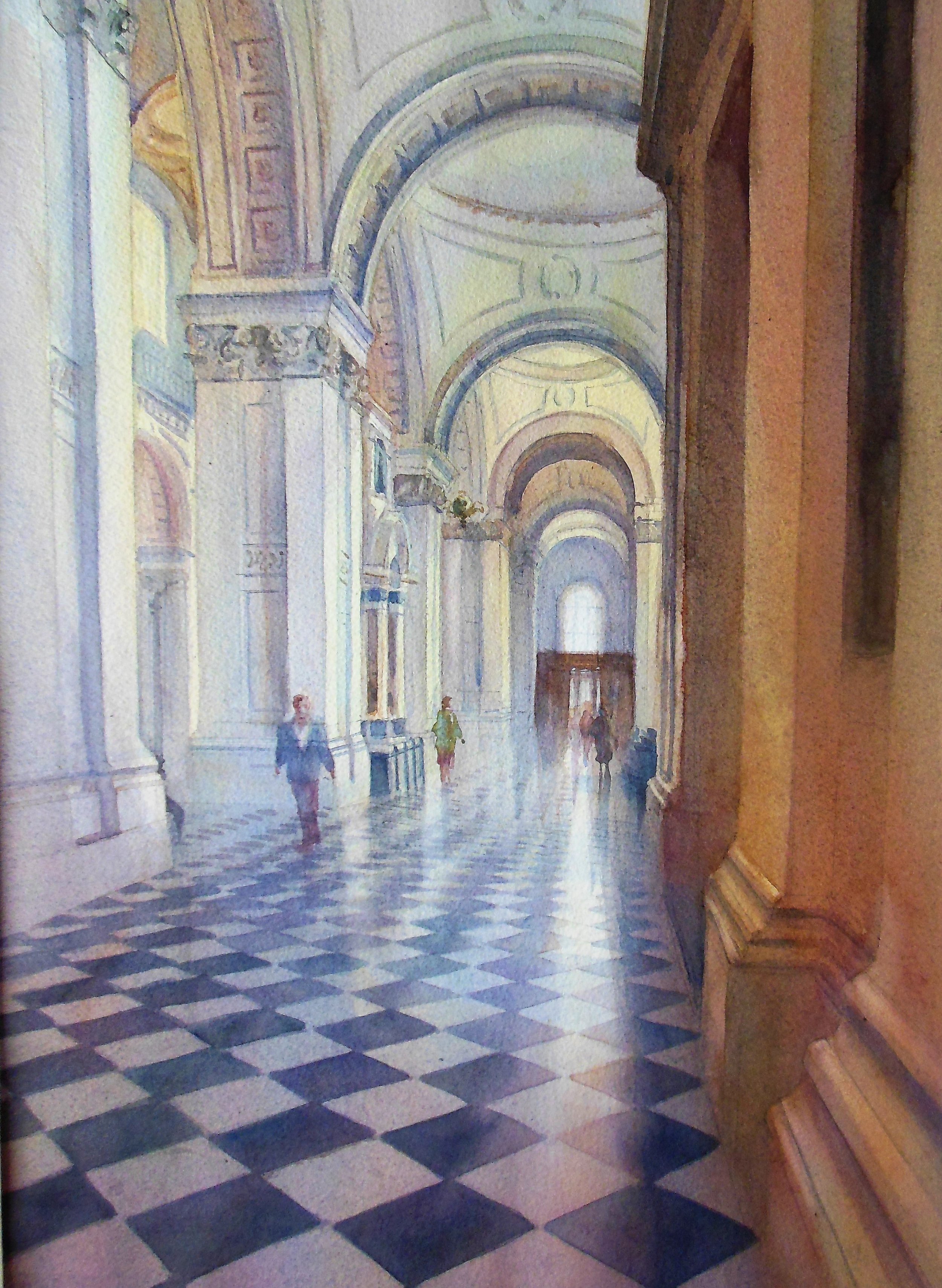ARTIST INTERVIEW: Tim Rose
Tell me about your journey to becoming an artist. What inspired you?
I had always been good at drawing and I applied to art school in the early 1970’s, one year in Watford, and three years in Sheffield coming out with a degree in Fine art. College taught me how to be an art student but not to be an artist, but I met a host of interesting people in the arts. It was only in my late 20’s I decided to try and make a living out of it by doing ink sketches of people’s houses. I became better at the discipline of architecture and taught myself watercolour and enjoyed the commercial aspect of getting commissions and meeting people. I gained an agent for greetings card work and also started to exhibit in galleries. I gained skill in watercolour and painted in St Pauls Cathedral, creating cards and prints of pictures of the interior for their shop and also in various counrty houses. Even in house portrait commissions, I became more interested in the depiction of light and illumination but also enjoyed sorting out a visual problem and architecture met this need. Some of my work is very representative and some is quite impressionistic. Apart from commissions, I followed my interest in other subjects such as landscape, urban scenes and portraiture, having one man shows in galleries and art fairs. I have exhibited in various open shows at the Bankside Gallery and Mall galleries.
Describe your creative process; from start to finish of a painting. Where do you find your inspiration?
My subject matter has become very varied and ranges from street scenes to portraiture and yet I approach every painting with the same underlying questions. What is the underlying structure?, where is the light source? and can I let the subject speak for itself? My subject matter is nearly always something I am seeing and I rarely start from a photo. I have done a lot of drawing in my career and have learned to have a good visual memory so I can work from sketches and detailed drawings. My Cathedral interior paintings are from initial sketches, transferred onto watercolour paper then executed in the studio or back on site. With watercolour, I start with broad washes of light colour, knowing I am working from light to dark and warm to cool. I try to do most of the painting in one sitting, which can be one hour or six. I like to let the picture gain momentum of its own and know that the major decisions must be made early on. Once the paper is fully dry, I can play with a few details, but not many. Stopping a painting halfway through and coming back never really works for me.
Do you paint from life or from a picture?
I prefer to work in situ as the unexpected can enter the painting, such as an unusual change of light, figures moving and seeing something new in the composition. I find the subject will ‘open up’ as I stand before it, sometimes revealing aspects I would not have initially noticed. A photo is one hundredth of a second but stand in one place for six hours and you see so much more. Also, on a more commercial consideration, when you are painting in public people are interested in what you are doing and this has led to many further opportunities.
What is it that you find fascinating about architecture?
I am not so much interested in architecture as such, but rather see it as part of our natural urban environment which reflects qualities of light and shadow. I enjoy the challenge of drawing as I feel I am a natural draughtsman rather than a natural painter and architecture challenges my skills.
Tell me about a particular piece of work you are proud of and why?
I am most proud of my St Paul’s Cathedral interior watercolours. They involved complex drawing and sensitive colouring. I enjoyed working in silence in a quiet place without disturbance and got a sense of satisfaction from the finished paintings. I start off painting with what I call my ‘tourist views’, then the subject began to open up and I saw other aspects in terms of light, shade, reflection etc. I have done paintings at different times of day and illuminations. They led to an exhibition in the crypt of St Paul’s with a series of watercolours and drawings.
How would you describe your style?
I would describe my style as representative, but really, I do not want to have a style at all. My subject is my greatest influence, not my relationship to other artists or genres.
Who is your favourite artist and why? Do they have an influence on your work?
My favourite artist is John Singer Sargent for his skill, daring and bravado. I feel he engages totally with his subject and it is his portraits and landscapes that have influenced me most, to try and capture first impressions and work fast with total commitment to the process.
What has been your greatest achievement so far as an artist?
I feel my greatest achievement is a life drawing I did at college, where I was so involved in the drawing that it was if someone else had done it. I would say I did not execute it but I was the only person present when it happened. It was a rare almost Zen like moment that has only happened a few times afterwards but gave me an insight in what might be possible with total attention.
Tell me about your studio
For many years I worked in an attic studio in my house but now have a large studio in Yorkshire Artspace in Sheffield. Getting a studio away from home released so many creative energies and I have much work on the go at any time, both oils and watercolours. I teach there and paint with friends doing portrait or life work. Being able to leave work out and come back to it fresh the next day is a great improvement. Also, displaying one’s own work around allows you to understand your own progress and narrative. It has enabled me to work on major projects and store work that I could not do otherwise.
Why do you think art is important in society?
Before the age of science and technology in which we now live in, artistic achievement was seen as one of the highest aspirations of mankind. I still have a nostalgia for this view though the mass reproduction of images has eroded its importance, but there will always be a place for an individual vision of nature in its widest interpretation, which will always engage and draw us out of our own narrow perceptions.











